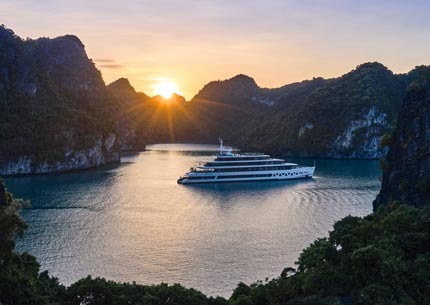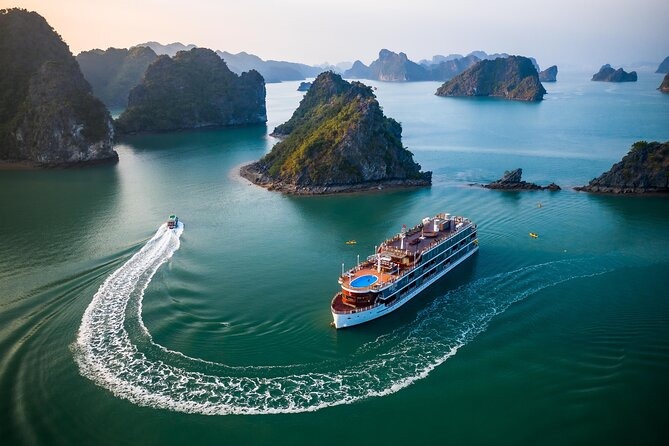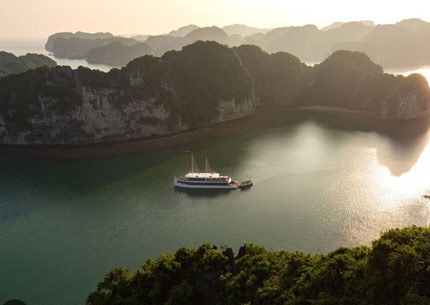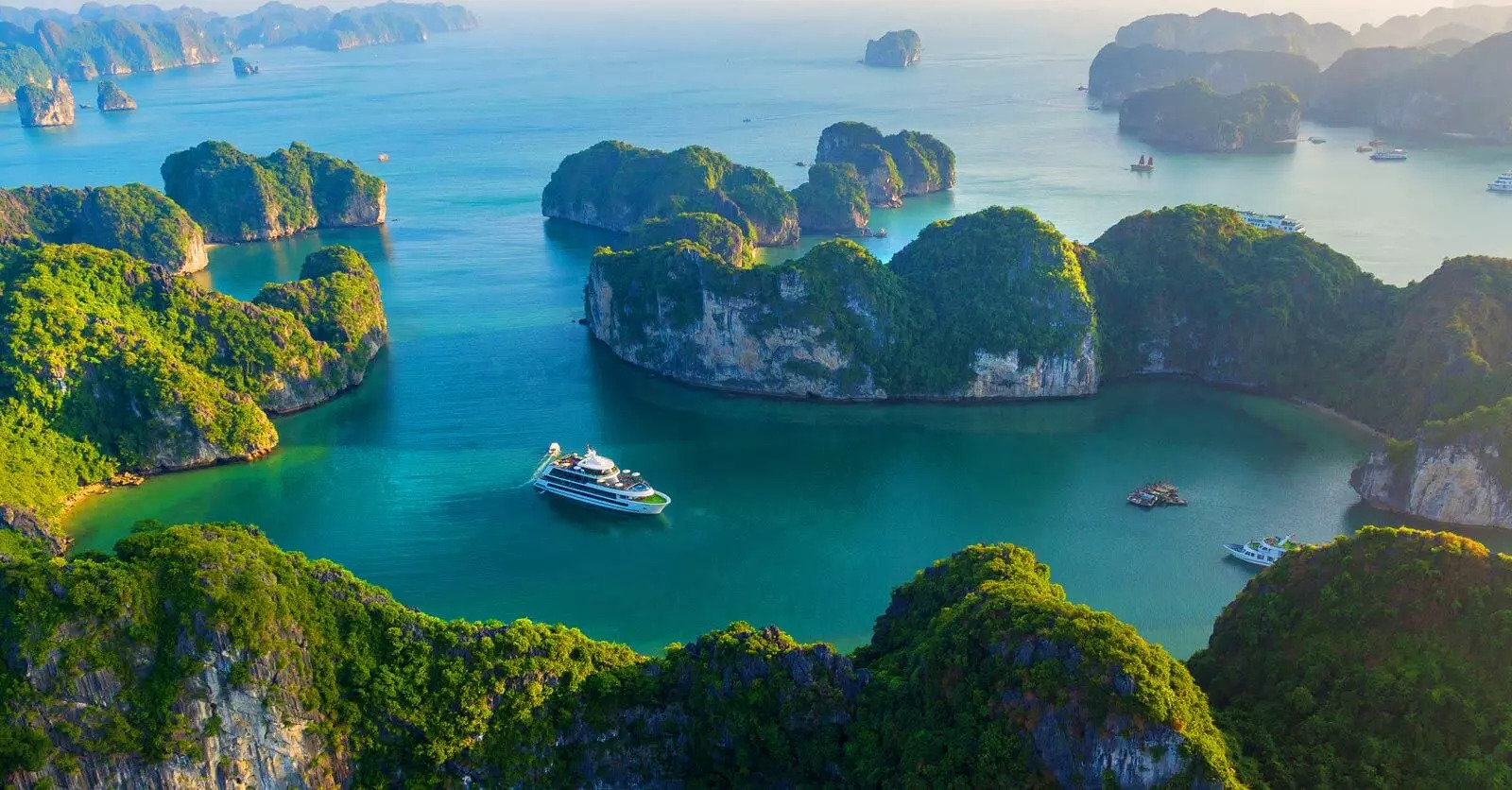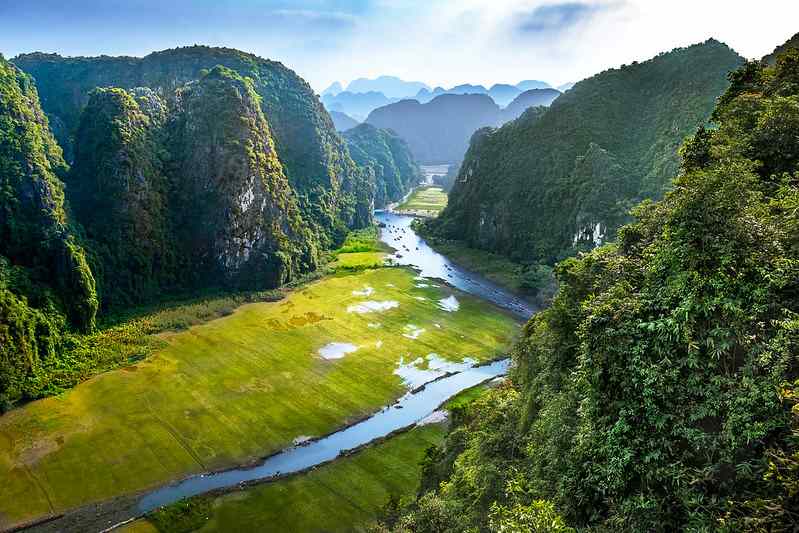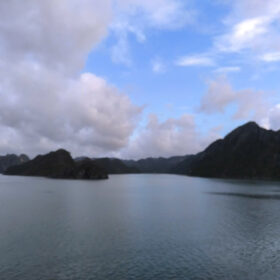Vietnam Typhoon Season: 15 Critical Insights for Safe Travel Planning
Planning your Vietnam journey requires understanding the country’s weather patterns. This comprehensive guide covers everything you need to know about the 2025 Vietnam typhoon season, helping you create the perfect itinerary while staying safe.
The Complete Guide to Vietnam’s Typhoon Patterns
Vietnam’s stunning landscapes transform dramatically with the seasons. From the emerald waters of Halong Bay to the bustling streets of Ho Chi Minh City, this Southeast Asian gem offers incredible experiences year-round. However, the typhoon season can significantly impact your travel experience if you’re unprepared.
According to the Vietnam Meteorological and Hydrological Administration, the 2025 typhoon season is projected to bring approximately 10-12 tropical storms to Vietnam’s coastal regions. This represents a slight increase from previous years, with climate scientists attributing this to ongoing climate pattern shifts in the Western Pacific.
Understanding these weather cycles isn’t just about avoiding rain—it’s about ensuring your safety while maximizing your experience in this beautiful country.

When Exactly is Vietnam’s Typhoon Season?
Vietnam’s typhoon season follows predictable patterns, though intensity can vary year to year. For 2025, meteorologists predict a standard typhoon timeline with some regional variations:
Northern Vietnam (Hanoi, Halong Bay)
- Early Season: June to mid-July (moderate risk)
- Peak Season: Late July through September (highest risk)
- Late Season: Early October (diminishing risk)
Central Vietnam (Da Nang, Hue, Hoi An)
- Early Season: September (moderate risk)
- Peak Season: October to November (highest risk)
- Late Season: Early December (diminishing risk)
Southern Vietnam (Ho Chi Minh City, Mekong Delta)
- Rainy Season: May to November (minimal direct typhoon risk)
The Vietnam National Center for Hydro-Meteorological Forecasting projects that the 2025 season may see its first significant storm in late June, with the most severe systems likely to develop between August and October. During this period, coastal areas could experience winds exceeding 150 km/h and rainfall totals of 300-500mm during major storms.
Regional Impact: How Different Parts of Vietnam Experience Typhoons
Vietnam’s elongated geography means typhoon impacts vary dramatically from north to south. Here’s a detailed breakdown of what to expect across different regions in 2025:
Northern Vietnam: Halong Bay and Beyond
The jewel of Northern Vietnam, Halong Bay typically experiences its typhoon season from July through September. The 2025 forecast indicates:
- Potential Disruptions: Approximately 8-12 days of cruise cancellations spread across the season
- Warning Systems: 24-48 hour advance notices for cruise cancellations
- Safety Measures: Temporary shelter provisions for travelers caught during storm warnings
If you’re planning to experience the breathtaking limestone karsts and emerald waters of Halong Bay, consider booking a 3-day luxury cruise experience outside the peak typhoon months. The extended itinerary provides flexibility to adjust your schedule if weather disruptions occur.
For those with limited time, the 2-day Halong and Lan Ha Bay cruise offers an excellent alternative, especially during May-June or October when typhoon risks are lower but weather remains favorable.
Central Vietnam: The Most Vulnerable Zone
Central Vietnam bears the brunt of the country’s most severe typhoons. The 2025 outlook for this region shows:
- Hoi An: Historical flooding risk in the Ancient Town (UNESCO site), with water levels potentially reaching 1.5-2 meters during severe storms
- Da Nang: Coastal erosion concerns along My Khe Beach, with projected shoreline retreat of up to 3-5 meters during major 2025 storms
- Hue: Rainfall projections of 400-600mm during peak typhoon events, potentially affecting access to historical sites
The Central Vietnam coastline is expected to face 3-4 significant typhoon threats during the 2025 season, with October being particularly volatile. Emergency evacuation protocols have been enhanced since 2023, with improved early warning systems and tourist accommodation safety standards.
Southern Vietnam: Minimal Typhoon But Maximum Rain
While Southern Vietnam rarely experiences direct typhoon hits, the region isn’t completely immune to weather disruptions:
- Ho Chi Minh City: Urban flooding expected during 15-20 heavy rain days between June and October
- Mekong Delta: Rising water levels of 0.5-1.5 meters above normal during the rainy season
- Phu Quoc Island: Occasional strong storms with 70-90 km/h winds possible between July and October
The southern region’s primary concern is the monsoon season rather than typhoons. However, the increased rainfall (1,800-2,200mm annually) can still impact travel plans, particularly outdoor activities and transportation.
Climate Change and Vietnam’s Typhoon Patterns
Climate scientists tracking Western Pacific storm patterns have noted concerning trends for Vietnam’s 2025 typhoon season:
- Increased Intensity: Average wind speeds projected to be 5-10% higher than historical norms
- Storm Surge Risk: Coastal areas face enhanced flooding risk due to 15-20cm sea level rise since 2000
- Rainfall Volume: Storm systems may produce 8-12% more precipitation than similar storms a decade ago
The Vietnam Institute of Meteorology, Hydrology and Climate Change notes that while the number of storms may remain consistent with historical averages, their intensity and unpredictability continue to increase. This makes advance planning and flexibility even more crucial for 2025 travelers.
8 Practical Travel Strategies During Vietnam’s Typhoon Season
Despite the challenges, millions safely navigate Vietnam during typhoon season each year. Here’s how to join them with minimal disruption:
1. Strategic Timing for Different Regions
Northern Vietnam: For Halong Bay adventures, the ideal windows in 2025 are:
- April to June: Warm temperatures (25-32°C) with limited rainfall
- October to November: Pleasant temperatures (20-28°C) with decreasing precipitation
Central Vietnam: Consider visiting:
- January to April: Dry conditions with moderate temperatures (22-28°C)
- May to August: Warmer but generally stable before typhoon season intensifies
Southern Vietnam: Optimal travel periods include:
- December to April: Minimal rainfall with comfortable temperatures (25-32°C)
2. Travel Insurance Essentials for 2025
When selecting travel insurance for Vietnam in 2025, ensure your policy includes:
- Weather-related cancellations: Coverage for pre-booked activities and accommodations
- Emergency evacuation: Up to $100,000 coverage recommended
- Trip interruption: Reimbursement for unused portions if storms cut your trip short
- Medical coverage: Minimum $50,000 for storm-related injuries or illnesses
Pro tip: Policies with “Cancel For Any Reason” (CFAR) provisions offer the greatest flexibility during uncertain weather seasons, though they typically cost 40-60% more than standard policies.
3. Accommodation Selection Strategy
When booking accommodations during or near typhoon season:
- Structural integrity: Choose newer properties built to withstand strong winds (post-2010 construction)
- Elevation: In coastal areas, prefer accommodations at least 10 meters above sea level
- Power backup: Confirm hotels have generators with 48+ hours capacity
- Flexible policies: Select bookings with free cancellation up to 24-48 hours before arrival
Safety first: Many luxury properties, including those associated with Halong Bay Lux Cruises, have implemented comprehensive typhoon protocols, including guest relocation plans and emergency supply reserves.
4. Essential Packing for Typhoon Season
Beyond standard travel items, your 2025 Vietnam packing list during typhoon season should include:
- Waterproof phone case: 100% waterproof with IPX8 rating
- Quick-dry clothing: Synthetic fabrics that dry 75% faster than cotton
- Portable power bank: Minimum 20,000mAh capacity (approximately 4-5 phone charges)
- Waterproof backpack cover: Or a dry bag with 15-30L capacity
- Lightweight rain poncho: More versatile than umbrellas in windy conditions
Medical supplies: Include water purification tablets, anti-diarrheal medication, and electrolyte packets to prepare for potential water supply disruptions.
5. Transportation Contingency Planning
The 2025 typhoon season may disrupt various transportation methods:
- Domestic flights: Budget for potential 1-2 night delays during severe weather
- Train travel: The North-South railway can experience washouts in Central Vietnam
- Road journeys: Mountain routes may face landslides after heavy rainfall
- Ferry services: Coastal connections often suspend operations 12-24 hours before storm arrivals
Flexible scheduling: Allow buffer days between major activities and departure flights, particularly when visiting multiple regions.
6. Emergency Communication Protocols
Stay connected during weather emergencies in 2025:
- Local SIM card: Vietnam’s 4G coverage reaches 96% of populated areas
- Key contacts: Save emergency numbers (113 for police, 115 for ambulance, 114 for fire)
- Embassy registration: Register with your country’s embassy before arrival
- Weather alerts: Download Vietnam’s official VnAlert app for real-time notifications
Language preparation: Save key weather-related phrases in Vietnamese on your phone for emergency communication with locals.
7. Typhoon-Season Activities and Alternatives
Even during typhoon season, Vietnam offers numerous experiences:
- Indoor cultural workshops: Cooking classes, lantern making, or traditional crafts
- Museum explorations: Vietnam’s major cities offer excellent historical and cultural museums
- Culinary tours: Food experiences can often continue despite moderate rain
- Flexible itineraries: Book major outdoor activities early in your trip to allow for rescheduling
Cultural immersion: Some of Vietnam’s most authentic experiences happen when travelers slow down due to weather disruptions, creating opportunities for deeper connections with local communities.
8. Post-Typhoon Travel Considerations
After a major storm passes:
- Infrastructure impacts: Roads may remain affected for 3-5 days after major events
- Water safety: Coastal swimming may be unsafe for up to a week due to runoff and debris
- Health precautions: Increased mosquito activity often follows flooding
- Local economy: Supporting local businesses becomes especially important for community recovery
Environmental awareness: Coastal ecosystems can be temporarily altered after storms, so consult local guides before resuming activities like snorkeling or diving.
Typhoon Safety: Understanding Warning Systems in Vietnam
Vietnam employs a sophisticated typhoon warning system that travelers should understand:
- Signal 1: Storm approaching (36-48 hours out) – Continue normal activities but stay informed
- Signal 2: Storm expected within 24 hours – Complete preparedness measures
- Signal 3: Imminent danger (within 12 hours) – Seek appropriate shelter
- Signal 4: Severe impact expected – Mandatory evacuation of vulnerable areas
The Vietnam Disaster Management Authority has implemented a color-coded tourism advisory system for 2025:
- Green: Normal operations
- Yellow: Increased vigilance, some activity modifications
- Orange: Significant disruptions expected, consider postponing non-essential travel
- Red: Severe conditions, travel highly discouraged
These warnings are disseminated through official channels, accommodation providers, and the VnAlert mobile application.
Halong Bay and Typhoons: Special Considerations
Halong Bay deserves special attention as one of Vietnam’s premier destinations that’s also vulnerable to typhoon impacts. The 2025 outlook includes:
Cruise Operations During Typhoon Season
The Halong Bay Management Board implements strict safety protocols for the bay’s 500+ cruise vessels:
- 72-hour monitoring: Continuous tracking of all weather systems in the South China Sea
- 48-hour assessment: Preliminary decisions about potential cruise modifications
- 24-hour confirmation: Final go/no-go decisions for all bay operations
Most cruise companies, including Halong Bay Lux Cruises, offer one of three options during typhoons:
- Rescheduling to alternative dates
- Modified itineraries in protected areas when possible
- Full refunds when operations must be canceled entirely
Alternative Experiences During Halong Bay Storms
When Halong Bay cruises face weather disruptions, consider these nearby alternatives:
- Ninh Binh: “Halong Bay on land” with similar limestone formations, accessible by 2-hour drive from Hanoi
- Trang An: UNESCO World Heritage site offering boat tours through caves and karst landscapes
- Bai Tu Long Bay: Sometimes experiences different weather patterns despite proximity to Halong Bay
Local insight: The luxury cruise providers at Halong Bay Lux Cruises maintain relationships with premium inland excursion operators to help guests salvage their northern Vietnam experience when sea conditions are unfavorable.
First-Hand Experiences: Traveler Stories from Recent Typhoon Seasons
Understanding real traveler experiences helps set appropriate expectations:
Sarah K., Australian tourist (October 2023): “Our Halong Bay cruise was canceled due to Typhoon Yagi approaching, but our cruise operator offered an excellent inland alternative exploring Ninh Binh and Tam Coc. While disappointed initially, it became a highlight as we experienced fewer crowds and authentic village life.”
James T., American family traveler (August 2024): “We experienced a ‘near miss’ in Da Nang when a typhoon changed course 48 hours before landfall. The resort had already implemented safety measures, moving pool furniture and installing window protections. We were impressed by their preparedness and communication throughout.”
Elena M., Solo traveler from Germany (September 2024): “I stayed in Hoi An during moderate flooding. While some streets in the Ancient Town had 30cm of water, locals were incredibly adaptive—setting up temporary elevated walkways and continuing business. It created a unique atmosphere that, while challenging, offered a different perspective on this resilient town.”
These experiences highlight the importance of flexibility, local guidance, and maintaining a positive attitude when weather impacts your plans.
Economic Impact of Typhoons on Vietnam’s Tourism Industry
Understanding the economic context of typhoons helps appreciate local responses to these weather events:
- Vietnam’s tourism industry contributes approximately 9.2% of GDP (2024 figures)
- Weather disruptions cost the sector an estimated $120-180 million annually
- Coastal provinces may lose 15-25% of expected tourism revenue during severe typhoon seasons
These economic realities explain why many tourism providers have developed sophisticated contingency plans. Hotels, cruises, and tour operators have strong financial incentives to help travelers navigate the typhoon season successfully, often going to extraordinary lengths to salvage experiences.
Climate Resilience: Vietnam’s Adaptation to Changing Weather Patterns
Vietnam has implemented several initiatives to improve typhoon resilience, particularly in tourism areas:
- Infrastructure improvements: Strengthened sea walls and drainage systems in coastal tourist zones
- Mangrove restoration: Over 12,000 hectares replanted since 2020 as natural storm buffers
- Early warning systems: Upgraded with 375 new monitoring stations nationwide
- Tourism industry training: Mandatory safety certification for tour operators in vulnerable regions
These efforts reflect Vietnam’s commitment to sustainable tourism despite climate challenges, with $450 million invested in climate resilience specifically for tourism zones between 2020-2025.
Conclusion: Navigating Vietnam’sTyphoon Season with Confidence
Vietnam’s typhoon season presents challenges but shouldn’t deter travelers from experiencing this magnificent country. With proper planning, flexibility, and the right expectations, you can navigate the 2025 season successfully:
- Time your visit strategically based on regional weather patterns
- Build flexibility into your itinerary, especially in typhoon-prone areas
- Choose reputable providers with clear weather policies, like Halong Bay Lux Cruises
- Prepare appropriately with the right gear and communication tools
- Embrace alternatives when weather disrupts original plans
Vietnam’s natural beauty, rich culture, and remarkable resilience shine through even during challenging weather. By approaching your 2025 journey with informed preparation and an adaptable spirit, you’ll discover why Vietnam remains one of Southeast Asia’s most rewarding destinations—in any season.
Ready to plan your Vietnam adventure? Explore our luxury cruise options with flexible booking policies designed specifically for Vietnam’s dynamic weather patterns. Our expert team can help you create the perfect itinerary that maximizes your experience while minimizing weather-related disruptions.
- Hotline | WhatsApp: +84.978.358.422
- Phone | WhatsApp: +84.962.261.687
- Email: halongbayluxcruises@gmail.com
- vietnammarveltravel@gmail.com

